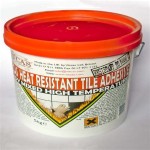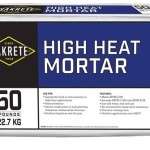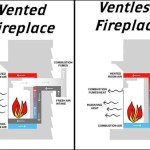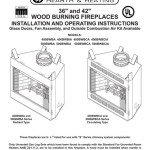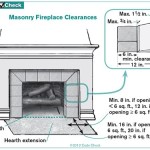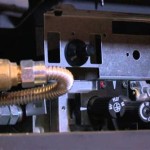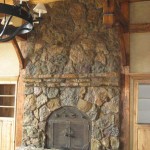Gas Fireplace Log Lighter Kit: A Comprehensive Guide
A gas fireplace log lighter kit provides a convenient and efficient method for igniting wood-burning fireplaces. These kits replace the traditional, often cumbersome, process of using kindling and paper to start a fire. By utilizing a controlled gas flame, log lighters offer a cleaner, faster, and more reliable way to establish a sustainable fire, enhancing the overall fireplace experience.
This article will explore the components, operation, installation, safety considerations, and maintenance associated with gas fireplace log lighter kits. Understanding these aspects is crucial for homeowners considering installing or maintaining such a system. It will also delve into the available options and factors to consider when selecting the appropriate kit for a specific fireplace.
Understanding the Components of a Log Lighter Kit
A typical gas fireplace log lighter kit consists of several key components working in concert. The primary element is the burner tube, a perforated metal pipe strategically positioned within the fireplace to distribute the gas flame. This tube is typically made of durable materials like black iron or stainless steel to withstand high temperatures and prolonged use.
The kit also includes a gas valve, which controls the flow of gas to the burner tube. This valve is usually a manual on/off type, often operated by a key or handle. More advanced systems may incorporate automatic shut-off features for enhanced safety. The valve connects to the gas supply line via appropriate fittings and connections, ensuring a leak-proof seal.
Another essential component is the key or handle used to activate the gas valve. This allows the user to easily turn the gas on and off, controlling the duration and intensity of the flame. The design and material of the key can vary, but they are typically constructed from durable materials like brass or steel.
Finally, the kit includes all necessary fittings and connectors for a secure and leak-free gas connection. These fittings are crucial for ensuring the safe operation of the system and preventing gas leaks, which can pose significant safety hazards. Proper installation and tightening of these fittings are paramount.
Operating a Gas Fireplace Log Lighter Safely and Effectively
Operating a gas fireplace log lighter requires careful attention to safety procedures. Before each use, it is essential to inspect the burner tube and surrounding area for any obstructions or debris. Clear any ash or soot build-up that may impede the gas flow or pose a fire hazard. Ensure proper ventilation by opening the fireplace damper fully.
To initiate the lighting process, place the logs strategically over the burner tube, allowing sufficient space for the flames to engulf the wood. Insert the key into the gas valve and slowly turn it to the "on" position. Immediately light the gas with a long-handled match or lighter, carefully maintaining a safe distance from the flame.
Once the logs are adequately ignited, gradually decrease the gas flow by partially closing the valve. The objective is to establish a sustainable fire with minimal gas consumption. Allow the wood to catch fully before completely turning off the gas valve. Never leave the gas valve on unattended.
It is crucial to monitor the fire closely during the initial stages and periodically throughout its duration. Ensure that the logs are burning safely and that the flames are contained within the fireplace. Exercise caution when adding more logs to the fire, and always use appropriate fire-resistant tools and gloves.
After the fire has completely burned out, allow the ashes to cool completely before removing them. Dispose of the ashes in a metal container with a tight-fitting lid, and store the container away from flammable materials. Regularly inspect the fireplace and chimney for any signs of damage or deterioration, and schedule professional maintenance as needed.
Installation Considerations for Gas Fireplace Log Lighter Kits
Installing a gas fireplace log lighter kit is generally considered a task for qualified professionals. Working with gas lines and connections requires specialized knowledge and expertise to ensure safety and compliance with local building codes. Improper installation can lead to gas leaks, fires, and other serious hazards.
Before beginning the installation process, it is essential to consult with a licensed plumber or gas fitter. They can assess the existing gas supply line and determine the appropriate size and type of connection required. They can also ensure that the installation complies with all relevant regulations and safety standards.
The installation process typically involves connecting the gas valve to the existing gas supply line using appropriate fittings and connectors. The burner tube is then positioned within the fireplace, ensuring that it is properly aligned and securely mounted. The key or handle is installed in a convenient and accessible location.
After the installation is complete, the gas fitter will conduct a thorough leak test to ensure that all connections are tight and secure. They will also verify that the gas valve is functioning correctly and that the system is operating safely. A comprehensive inspection of the entire fireplace and chimney is also recommended to identify any potential issues.
It is imperative to obtain all necessary permits and approvals from local authorities before installing a gas fireplace log lighter kit. Failure to comply with building codes can result in fines and penalties. Additionally, it is advisable to keep detailed records of the installation process, including the names and contact information of the professionals involved, as well as copies of all permits and approvals.
Safety Precautions and Maintenance of Log Lighter Kits
Safety is paramount when operating and maintaining a gas fireplace log lighter. Regular inspection of all components is crucial. Look for signs of wear, corrosion, or damage to the burner tube, gas valve, fittings, and connectors. Any damaged or malfunctioning parts should be replaced immediately by a qualified professional.
It is essential to have a carbon monoxide detector installed in the vicinity of the fireplace. Carbon monoxide is a colorless, odorless gas that can be produced by incomplete combustion. Exposure to carbon monoxide can be fatal. Regularly test the carbon monoxide detector to ensure that it is functioning correctly.
Schedule annual maintenance inspections by a qualified technician. A professional can thoroughly inspect the entire system, clean the burner tube, check for gas leaks, and ensure that all components are functioning properly. They can also identify any potential problems before they escalate into serious issues.
Keep the area around the fireplace clean and free of flammable materials. Store firewood away from the fireplace to prevent accidental ignition. Never use flammable liquids, such as gasoline or kerosene, to start the fire. Supervise children and pets closely when the fireplace is in use.
If a gas leak is suspected, immediately turn off the gas supply at the main valve. Do not use any electrical devices, such as lights or telephones, as they could create a spark and ignite the gas. Evacuate the premises and contact the gas company or fire department immediately. Do not re-enter the building until it has been declared safe by qualified professionals.
Regularly clean the fireplace and chimney to remove ash, soot, and creosote. Creosote is a flammable substance that can build up in the chimney and pose a fire hazard. A professional chimney sweep can safely and effectively remove creosote build-up.
Choosing the Right Log Lighter Kit for Your Fireplace
Selecting the appropriate gas fireplace log lighter kit requires careful consideration of several factors. The size and configuration of the fireplace are primary considerations. Measure the width and depth of the firebox to ensure that the burner tube is the correct size and will fit properly. Consider the shape and design of the fireplace when choosing a kit that will provide optimal flame distribution.
The type of gas supply available is another important factor. Log lighter kits are typically designed for either natural gas or propane. Ensure that the kit is compatible with the type of gas supply available in your home. Consult with a qualified professional to determine the appropriate gas pressure and flow rate for your fireplace.
The desired level of control and automation is also a key consideration. Basic log lighter kits feature a manual on/off valve that is operated by a key or handle. More advanced systems may incorporate automatic shut-off features, timers, or remote controls. Consider your preferences and budget when choosing a kit with the desired level of functionality.
The material and construction of the burner tube are important factors to consider. Burner tubes are typically made of black iron or stainless steel. Stainless steel is more resistant to corrosion and may be a better choice for fireplaces that are exposed to moisture or humidity. However, black iron is typically more affordable and can provide adequate performance in dry environments.
Finally, consider the reputation and warranty of the manufacturer. Choose a reputable manufacturer with a proven track record of producing high-quality and reliable products. Review the warranty carefully to ensure that it provides adequate coverage for defects in materials and workmanship. Read customer reviews and ratings to get a better understanding of the product's performance and reliability.
By carefully considering these factors, homeowners can select a gas fireplace log lighter kit that is safe, efficient, and meets their specific needs and preferences. Consulting with a qualified professional is highly recommended to ensure proper installation and safe operation of the system.

Hpc Gas Log Lighter Burner Kit

Natural Gas Log Lighter Kit 6900 Firestarters M Hearth Accessories Buy From
.png?strip=all)
How To Install A Log Lighter Fireplace Gas Starter Pipe

How To Install A Log Lighter Fireplace Gas Starter Pipe

Hpc Gas Log Lighter Burner Kit

Napoleon Gvfl30 Ventless Gas Log Set 30 Inch

Gas Logs And Fireplace S Service Charlotte Nc

How To Select And Install A Gas Fireplace Log Set Spotix Blog

American Gas Log Dundee Oak 18 In Vented Natural Fireplace Set With Complete Kit Manual Match Lit Do18hdmtch The Home Depot

How To Put In A Gas Log Set For Fireplace


